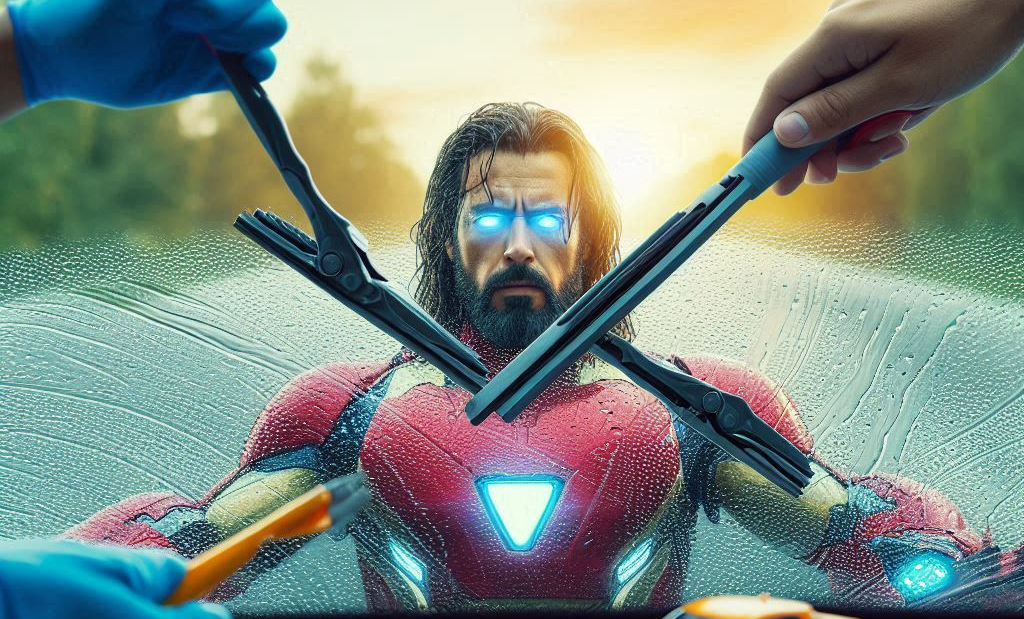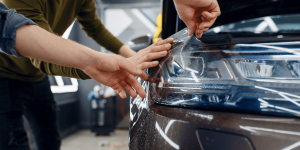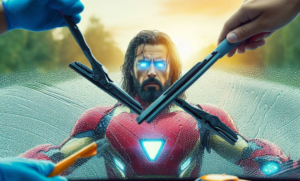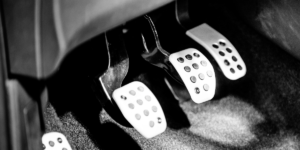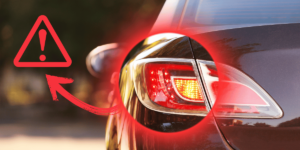Let’s say you’re ready to go, but when you turn the key, nothing happens. Not a single click or roar from the engine. It can be stressful and make you feel like you’re stuck. We’ll talk about the most common reasons your car won’t start and you can’t hear a clicking sound in this blog post. So you can get back on the road as soon as possible, we’ll explain it in simple words. Let us figure this out so your car can run smoothly again.
Dead Battery
One of the main reasons a car won’t start is that the battery is dead. The engine won’t start if the battery is dead. Start the car and turn on the headlights to check the battery. The battery is probably dead if they’re dim or won’t turn on at all. If your battery dies, here are some things you can do:
- Start the car with a jump: You can try to jump-start the car if you have jumper wires. Even if the battery is dead, this will give the car enough power to start the engine.
- Get a new charger: You’ll have to get a new battery if the old one is dead and you can’t jump-start the car. A new battery is easy to find at most shops that sell auto parts.
- Get a tow truck: You’ll need to call a tow truck if you don’t have jumper wires or can’t change the battery yourself.
To keep your battery from dying, try these tips:
- When you leave the car, turn off all of the power parts: In this group are the lights, radio, and air conditioning. When you leave the electrical devices on, they can drain the battery.
- Take care to keep the battery connections clean and tight: If the battery connections are loose or corroded, the battery may not work right.
- Have the battery checked often: The battery can be checked by a mechanic to make sure it’s still good.
Bad Starter
Sometimes a car won’t start because the starter is broken. As the name suggests, the starter turns over the engine. If it’s broken, the car won’t start. These are some signs that the starter is bad:
- Even though the car won’t start, the lighting and other electrical parts still work.
- When you try to start the car, it makes a clicking sound.
- The car starts slowly or not at all.
- When you try to start the car, it smells like oil on fire.
Taking your car to a mechanic is the best thing to do if you think the starter might be broken. The starter can be checked by a professional to make sure it works right. The starter needs to be changed if it’s broken.
To keep your starting from going bad, try these tips:
- Keep your finger off the start button for no more than 10 seconds at a time. This could make the starter too hot, which would make it break.
- Let go of the key after 10 seconds if the car doesn’t start. Then try to start it again after a few minutes.
- A skilled mechanic should check and service the starter on a regular basis.
- You might be able to jump-start the car if the starter is broken. Just connect the battery straight to the starter. This will only work for a short time. You should still get the starter changed by a mechanic.
- You should call a tow truck and have the car taken to a mechanic if you don’t know how to work on cars.
Bad Ignition Switch
Another reason your car might not start is a broken key switch. When the ignition switch doesn’t work, power doesn’t get to the starter, and the car won’t start. This is a sign of a bad starting switch:
- The car either won’t start at all or starts and stops sometimes.
- The car won’t start, but the lighting and other electrical parts work.
- If you put the key in the “accessory” position, the car will start. If you put the key in the “start” position, it will not start.
- The starting switch is broken or worn out.
- The starting switch is rusty or dirty.
You should take your car to a mechanic to find out what’s wrong if you think the starting switch is broken. The ignition switch can be checked by a professional to make sure it works right. The starting switch needs to be changed if it’s broken. Following tips will help keep your key switch in good shape:
- Don’t jiggle the key in the ignition switch.
- Do not hold down the “start” key for more than 10 seconds at a time.
- A trained mechanic should check and service the ignition switch on a regular basis.
Other Possible Reasons
Here is other possible reasons a car might not start after the battery, starter, and ignition switch have been checked. These are some other possible reasons:
- Bad fuel pump: If the fuel pump is broken, it will not move fuel from the gas tank to the engine. The engine won’t be able to start if the fuel pump is broken.
- Clogged fuel filter: The fuel filter stops dirt and other things from getting into the fuel before it gets to the engine. When the fuel filter gets jammed, it can stop fuel from getting to the engine, which can make it impossible to start.
- Bad Spark plug or Wire: It could be a bad spark plug or wire. The spark plugs light the fuel in the engine tanks. The engine won’t start if a spark plug or wire is broken.
- Blown fuse: If the fuse blows, power may not get to the fuel pump, spark plugs, or other parts that are needed to start the engine.
- Problem with the engine’s computer: There is a problem with the computer in the engine. The computer controls many of the tasks that are necessary to start the engine. If something is wrong with the computer that controls the engine, the car won’t start.
Check the battery, starter, and key switch. If the car still won’t start, you should take it to a mechanic to find out what’s wrong. They can use special tools to check the computer, fuel system, and electrical system to figure out why the car won’t start.
What Should You Do If Your Car Doesn’t Start But The Lights Are On?
If your car won’t start but the lights work, here are some things you can try to figure out what’s wrong and maybe fix it:
- Turn Off Accessories: To begin, turn off any accessories that might be using electricity, like the radio, air conditioning, and internal lights. A weak battery might be able to power the lights, but not always enough to start the engine.
- Check the Battery Connections: Look for corrosion or loose connections on the battery leads. Corrosion can make it hard for the battery and starter to connect electrically. A combination of baking soda and water can be used to clean the terminals if you find corrosion. Make sure to disconnect the battery cables before you clean them and then safely reconnect them afterward.
- Jump-Start Your Car: You can try a jump-start if you have jumper cables and another car whose battery works. Follow the directions in your car’s manual to connect the jumper cables properly. Try starting the donor car first, then your own. If it turns on, your battery may not have enough power and needs to be charged or replaced.
- Check the Voltage of the Battery: To check the voltage of your car’s battery, use a tester or voltmeter. About 12.6 volts should show that the battery is fully charged. If the voltage is much lower, it means that the battery may be dead or dying.
- Check the Fuses: Check the fuses in the fuse box of your car, which is normally under the hood. Check to see if any fuses in the starting device have blown. Any that you find should be changed out for fuses that have the same amperage.
Should you have an automatic transmission, try changing your car into “Neutral” instead of “Park” and then try to start it. The neutral safety switch can sometimes not work right, which means the car can’t be started in “Park.”
Get Professional Help: If none of the steps above fix the problem, you should talk to a professional mechanic. There could be more complicated electrical issues or problems with the starter or generator that need to be found and fixed by a professional. When working with car batteries and electrical systems, remember to put safety first. If you’re not sure about any of the steps or if the problem keeps happening, you should have a professional mechanic look at your car and fix it.
What Should You Do If Your Radio Works But Your Car Won’t Start?
If you want to figure out why a car won’t start but has a radio that works, turn off all the accessories, check the battery connections, use jumper wires to start the car, test the battery voltage, look at the fuses, look at the ignition switch, and try starting the car in neutral. If these steps don’t fix the problem, you should get help from a trained mechanic for more complicated electrical issues or problems with the starter or alternator. If the problem doesn’t go away, you should have a professional mechanic look at and fix your car. If the problem keeps happening, it’s important to be careful when working with car batteries and electrical systems.
In case your car won’t start and is only clicking, what should you do?
If your car won’t start but the radio still works, try turning off all the accessories, checking the battery connections, jump-starting it with jumper wires, testing the battery voltage, checking the fuses, looking at the ignition switch, and starting the car in neutral. If these steps don’t fix the problem, you should get help from a trained mechanic for more complicated electrical issues or problems with the starter or alternator. If the problem doesn’t go away, you should have a professional mechanic look at and fix your car. If the problem keeps happening, it’s important to be careful when working with car batteries and electrical systems. If you’re not sure how to do any of these steps or if the problem keeps happening, you should get help from a professional.
Car Won’t Start, Clicking Noise: What to Do?
If your car won’t start and you hear a clicking noise, it is most likely a problem with the battery, starter, or solenoid.
Battery: Most of the time, a car won’t start because of the battery. The engine won’t start if the battery is dead. Start the car and turn on the headlights to check the battery. The battery is probably dead if they’re dim or won’t turn on at all. You can try to jump-start the car if you have jumper wires. Even if the battery is dead, this will give the car enough power to start the engine. You’ll need to call a tow truck or a roadside help service if you don’t have jumper cables.
Starter: You can’t get the car to start if the starter isn’t working because it turns over the engine. Try starting the car again to check the starter. The starter is likely working if you hear a popping sound. If there is no sound, though, the starting might be broken.
Solenoid: The solenoid is a switch that sends power to the starter. In this case, the starter won’t get the power it needs to turn the engine over. Tap the switch with a hammer while someone tries to start the car to check it. It’s likely the switch is broken if the car starts.
Other possible causes:
- A blown fuse
- A problem with the fuel pump
- A problem with the spark plugs or wires
- A problem with the engine’s computer.
Car will not start no Clicking no Power?
- Dead battery: This is the most common reason why a car won’t start. If the battery is dead, there won’t be enough power to start the engine or turn on any of the electrical accessories.
- Corroded battery terminals: If the battery terminals are corroded, it can prevent the battery from providing power to the car.
- Loose or broken battery connections: If the battery connections are loose or broken, it can also prevent the battery from providing power to the car.
- Bad alternator: The alternator is responsible for charging the battery while the car is running. If the alternator is bad, the battery won’t be charged and will eventually die.
- Problem with the electrical system: There could be a problem with the car’s electrical system, such as a blown fuse or a faulty wire.
FAQs About Car Won’t Start Clicking Noise?
Q: What Is a Neutral Safety Switch, and How Does It Affect Starting?
A: This safety switch makes sure that your car can only start when it is in “Park” or “Neutral.” If it’s broken, your car might not know it’s in either of these places, which would stop it from starting.
Q: How can I tell if the problem is with the neutral safety switch?
A: You could try putting your car in “Neutral” and then trying to start it. If it starts in “Neutral” but not “Park,” the neutral safety switch may be broken.
Conclusion
It can be frustrating to deal with a car that won’t start without making a clicking sound, but it’s possible to get pass this problem. If you understand the possible problems this post talks about, you’ll be better able to figure out what’s wrong and fix it. You now know how to fix problems with your car’s wiring and get it back on the road, whether it’s a dead battery, a broken starter, a broken ignition switch, a broken neutral safety switch, or bad wire connections. Remember that when your car is having problems, it’s sometimes best to get professional help, especially if you’re not sure what’s wrong. Have a safe trip!



